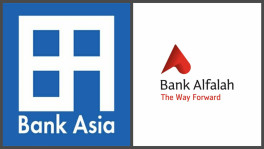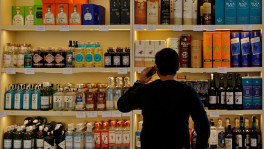Banks skimp on loans when retail needs boost
Disbursement of retail loans dropped over 90% in April-June quarter of 2020 from that in the previous quarter

While governments across the world are focusing on stimulating consumption to speed up economic recovery from pandemic shocks by producing financial packages, banks in Bangladesh are walking a different path by skimping on retail loan disbursement.
Two factors – lending rate cap and erosion of the economic capacity of customers – have driven banks away from the retail business, said industry insiders.
Consumer loans – a significant tool that increases cash flows to the people and encourages them to spend more – saw a drastic fall following the imposition of the 9% interest rate cap on all loans except for credit cards, as the retail business is not profitable for banks at this rate.
The disbursement of retail loans, which consist of consumer and personal loans, dropped by more than 90% in the April-June quarter from that of the previous quarter of the current year, according to banks.
Industry insiders said retail loan disbursement in the banking sector remained sluggish in July and August as well.
Bangladesh Bank data show the overall growth in private sector credit remained steady between 8.87% and 8.6% during the same period.
However, according to the latest July data, private sector credit growth rebounded to 9.20%, backed by the implementation of the Covid-19 stimulus packages.
The Bangladesh Bank implemented the lending rate cap from April 1 this year when the banking sector already started to feel the pinch of economic slowdown in the wake of the Covid-19 outbreak.
Consumer loan growth had begun to slow down from the beginning of 2020 amid the pressure to bring down the lending rate to a single digit. The outbreak of the novel coronavirus in the country in March worsened the situation, leading to stagnation of all business activities.
Sources in banks say the implementation of the lending rate cap has forced the banks to be more careful in disbursing retail loans.
For instance, Brac Bank – the largest SME (small and medium enterprise) centric bank in the country – disbursed only Tk14 crore in consumer loans during the April-June quarter – 96% down from Tk376 crore disbursed in the previous quarter.
In 2019, the retail portfolio of the bank grew by 12%, contributing 42% in its operating profit, Tk278 crore, from the retail segment, the highest earnings among all loan segments including SME and corporate.
Moreover, the default loan rate was lowest (2.14%) in this segment in December last year.

However, the 9% interest rate cap has changed the scenario. The bank which was on the move to expand its retail portfolio is now backtracking on this as lending at this rate has made this segment a loss-making business.
This is putting a negative impact on the bank's profitability also.
In the first half of the current year, the bank saw over 60% drop in its net profit, according to the bank.
The situation is very similar in other banks that focus on retail business.
Eastern Bank disbursed only Tk27 crore in retail loans in three months – April to June this year – 90% down from Tk208 crore disbursed in the previous quarter.
The total retail portfolio of the bank stood above Tk1,800 crore in June, which accounted for 3.5% of market share, according to the bank.
In the first six months of this year, the bank's net profit fell slightly to Tk157 crore from Tk158 crore in the corresponding period of the last year.
Meanwhile, City Bank recorded a 37% fall in its retail loan disbursement during the April-June quarter of the current year.
The bank disbursed Tk85 crore in retail loans in this period, down from Tk135 crore in the previous quarter, according to the bank.
The bank's total retail loan portfolio stood at Tk3,537 crore in June.
The stagnant condition in retail business partly accounted for eroding net profit of the bank by 42.39% in the first six months of the current year.
According to Bangladesh Bank data, total consumer financing in the banking industry declined by 4% to Tk68,200 crore in March 2020 from December last year.
The share of consumer financing came down to 7% of the total loans in the banking industry in March this year, which was 10% in December last year.
The slowdown in retail business has not only hurt banks' profitability but also has left negative impacts on shareholders in the stock market and the overall consumption level, which will ultimately affect the country's economic growth.
For instance, although Brac Bank is a well-rated bank by global rating agencies, the share price of the bank has continued a downward trend in the Dhaka Stock Exchange.
The price of each share of the bank has dropped by 50% in the past one year to currently stand at Tk36.
The sluggish retail business of banks is also reflected in consumer spending.
The final consumption expenditure (formerly total consumption) to GDP in the country declined slightly to 74.69% in last fiscal year from 74.92% in the previous fiscal year, according to the Bangladesh Bureau of Statistics (BBS).
The inflation rate also remained down due to slow consumption. In July this year, inflation fell 49 basis points to 5.53% compared to a month earlier.
Interest rate cap could kill retail lending
India also has been suffering from severe consumption shock due to erosion of spending capacity.
Consumers in India are cautious about spending in the wake of the Covid-19 pandemic with 78% of respondents claiming to reduce discretionary spending, according to a survey by consultancy firm KPMG.
The Reserve Bank of India (RBI) recently said the banking sector needs to be freed of risk aversion, which is impeding the flow of credit to productive sectors and undermining the role of banks in the economy, according to media reports.
Raising cautionary alarm, Selim RF Hussain, managing director of Brac Bank, said the business of small and medium enterprises (SMEs) and retail segments could die out soon due to the interest rate cap. "It is impossible for banks to run lending operations at a 9% rate in these two high-cost sectors," he said.
"We are only focusing on SME business, but retail is also an important segment. For instance, we are financing Walton that manufactures consumer goods like refrigerators, televisions, and washing machines. But how will customers buy these products if we do not provide consumer financing?" he told the Business Standard in a recent interview.
The size of consumer financing is huge in Europe and America, and their businesses will collapse overnight if it is shuttered, he argued.
"My father bought a car at the age of 45 after saving for a long time. His generation did not like loans. Moreover, consumer financing was not available then.
"But, I bought a car at the age of 33 with a loan. My children might be able to buy cars in their 20s with loans. This is how consumer financing is boosting domestic demand and contributing to economic growth," he said.
Sluggish consumption depresses demand for loans
Demand for retail loans is low due to sluggishness in consumption amid the ailing economic situation, said Rahel Ahmed, managing director of Prime Bank.
He said consumption would not increase until a rebound of the economy. Banks will be interested in lending retail loans when the job market is vibrant, he added.
"Massive job cuts took place in the garment sector before the Covid-19 outbreak, and the pandemic worsened the situation. Cancelled export orders have started to be restored, but there are questions as to how many workers have got back their jobs," he said.
Garment workers have a significant contribution to the overall consumption, he continued, "If they get back their job, they will purchase necessary goods which will help the economy rebound.


 Keep updated, follow The Business Standard's Google news channel
Keep updated, follow The Business Standard's Google news channel
















